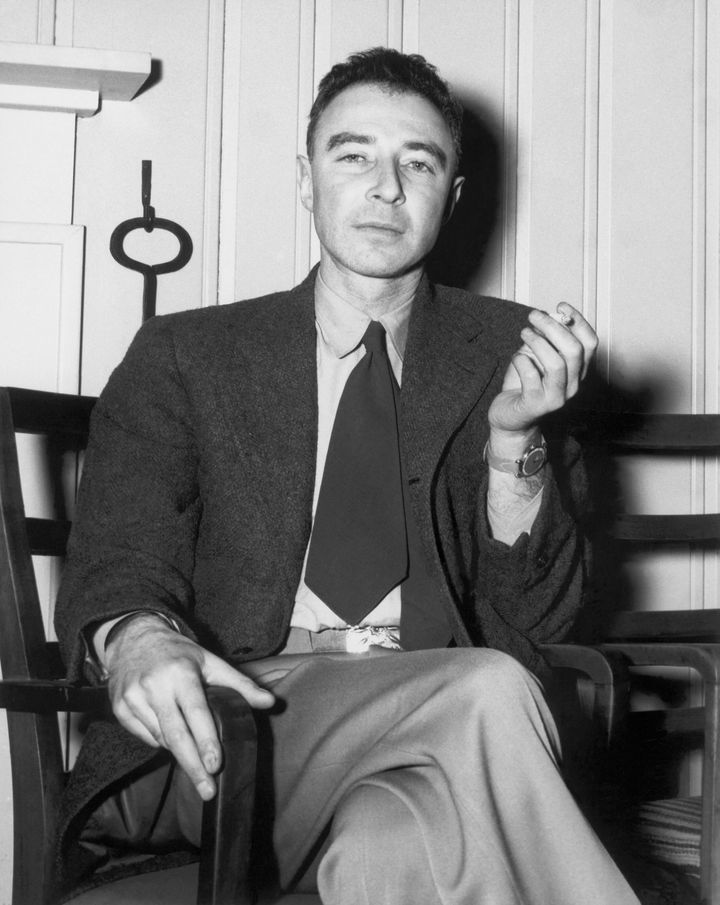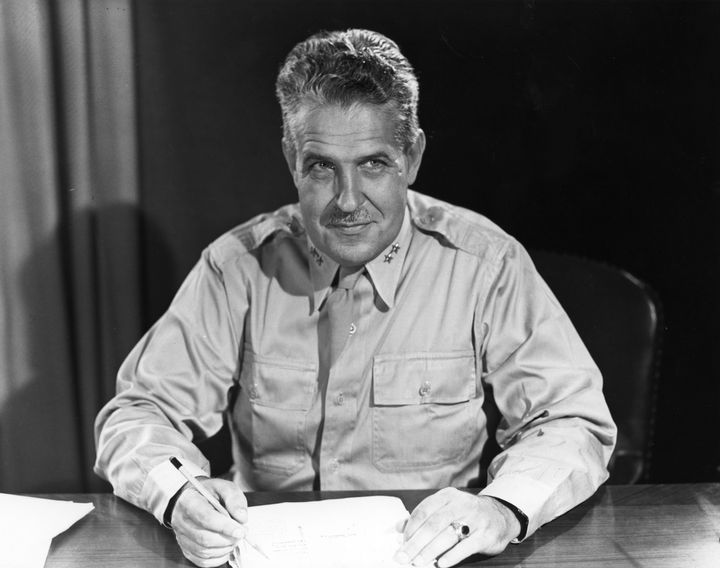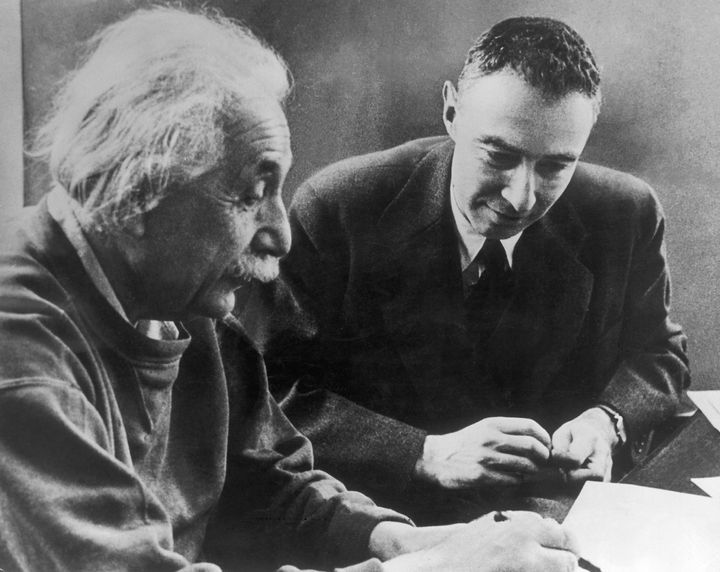
With a runtime of precisely three hours and nine seconds, Christopher Nolan’s Oppenheimer is the Oscar-winning director’s longest – and potentially most ambitious – film yet.
The historical biopic charts the life and career of J. Robert Oppenheimer – played by everyone’s favourite brooding Irish actor, Cillian Murphy – whose top secret work during World War II led to the creation of the world’s first known nuclear weapons.
Nolan’s film is based on a 2005 biography, American Prometheus, and thanks to his source material, the movie sticks closely to the true story of Oppenheimer’s life.
The director also takes on the momentous task of exploring the ethical questions raised by his work and the terrifying, worldwide ramifications of his inventions.
“It is an intense experience, because it’s an intense story,” he previously told Wired. “I showed [Oppenheimer] to a filmmaker recently who said it’s kind of a horror movie. I don’t disagree.
“Some people leave the movie absolutely devastated. They can’t speak.”
If you’re looking for light relief, you can always see Barbie instead. But if you are seeing Oppenheimer (or planning a double bill, in which case we salute you) then here’s the history you need to know before setting up camp in the cinema…
Who was J. Robert Oppenheimer?

Cillian Murphy’s tortured protagonist is theoretical physicist J. Robert Oppenheimer, who helped develop the world’s first nuclear weapons.
A graduate of both Harvard and Cambridge, Oppenheimer was working at the California university Berkeley when World War II broke out.
By 1942, he had been recruited for a top secret job on the “Manhattan project”, a research group which went on to develop the world’s first nuclear weapons. Oppenheimer ran a branch of the project, the Los Alamos Laboratory, where designing took place, and in the biography that inspired the film, he’s described as the “father of the bomb”.
Nolan’s film – the first feature-length biopic on the physicist – doesn’t just chart Oppenheimer’s career, but also explores his personal life. Florence Pugh plays love interest Jean Tatlock, a fellow scientist with links to the communist party. Emily Blunt stars as Kitty Oppenheimer, who the physicist married in 1940 and with whom he later welcomed two children.
Who did he work with?
Despite being top secret, the Manhattan Project was a huge undertaking, and at its peak, boasted over 13,000 employees. While Nolan’s cast isn’t quite that vast, numerous other Hollywood heavyweights have joined Cillian, Florence and Emily to bring real people to life again on screen.
Matt Damon plays Leslie Groves, who directed the Manhattan Project, while Rami Malek stars as another of the group’s scientists, David Hill.

Licorice Pizza’s Benny Safdie plays Edward Teller – who worked with Oppenheimer on the Manhattan Project before going on to design the Hydrogen Bomb in the 1950s – and Stranger Things’ Matthew Modine portrays real-life engineer and policy maker Vannevar Bush.
Robert Downey Jr also stars as Lewis Strauss, who served as part of the US Atomic Energy Commission, a group set up to oversee the use of nuclear warfare in the wake of WW2.
What weapons did Oppenheimer design?
Oppenheimer’s lab created two atomic weapons, dubbed “Little Boy” and “Fat Man”, with test detonations being carried out in the New Mexico desert in July 1945.
Just one month later, in events that would alter not just the course of WW2 but the world itself, the US dropped one bomb on Hiroshima, Japan. Three days later, they dropped a second on Nagasaki.
Estimates on the deaths caused by two bombs vary, with between 129,000 and 226,000 people said to have lost their lives in the catastrophic explosions. Japan surrendered just days after.
What happened next?
While Oppenheimer ran Los Alamos and ultimately allayed ethical fears voiced by his colleagues in the run-up to the horrific events of August 1945, he soon became painfully aware of the destruction and death his inventions caused in the wake of the war’s end.
In October 1945, he famously told then-President Harry S. Truman: “I feel I have blood on my hands.” Nevertheless just a year later, he appeared in documentary Atomic Power, an extraordinary film which saw scientists play themselves in a recreation of the making of the bomb.

The public, notes the Smithsonian magazine, weren’t entirely convinced, and the New Yorker published a huge article on the devastation the weapons caused.
Oppenheimer began speaking out about the dangers of nuclear warfare more frequently too, even calling for designs that were built on his own, such as the Hydrogen Bomb, to be scrapped.
In 1954, after a series of hearings, his security clearance was removed by the US government, and his work with them came to an end.
Oppenheimer continued to work as a physicist, lecturing, writing papers and giving public talks for over a decade, until, in 1965, the chronic smoker was diagnosed with throat cancer. He underwent both chemotherapy and radiotherapy but in February 1967, aged 62, he fell into a coma and died three days later.
This article has been updated to amend a typo.
